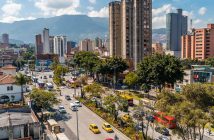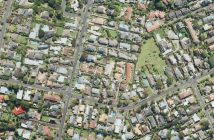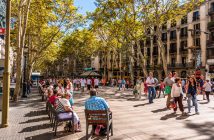As we densify our cities to accommodate population growth, we must not lose sight of the environmental benefits that urban green space provides, warns the Parliamentary Commissioner for the Environment, Simon Upton

Planning for and providing urban green spaces of any description, public and private, should not be optional,” the Commissioner says in a new report.
“The environmental services green spaces provide – such as temperature regulation, stormwater management, air filtration and habitat provision – don’t just benefit individuals. They benefit everyone around them. They are a form of infrastructure every bit as important as pipes and roads.
“The ability of our trees and parks to filter stormwater flows and cool their immediate surroundings can mitigate some of the heat and excess water that impervious surfaces generate. These services will be in even higher demand as our cities become hotter and more subject to extreme rain events in a changing climate.”
The Commissioner’s report, Are we building harder, hotter cities? The vital importance of urban green spaces, presents new data on how public and private green space in Auckland, Hamilton and Greater Wellington has evolved over the decades.
“New Zealand cities are currently well-endowed with green space, though some suburbs are greener than others. But our data show that urban green space has been declining over time. Between 1980 and 2016, green space per person fell by at least 30% in Auckland, and at least 20% in Hamilton. Nearly all of this loss occurred on private residential land,” the Commissioner says.
The report found two main factors have driven this trend. The first is infill development – the conversion of yards and sections into houses and driveways in existing urban areas. The second is a shift towards larger houses on smaller sections in new subdivisions.
Many councils are struggling to improve the quality and availability of public green spaces to compensate for the loss of private yards and gardens.
The trends documented in this report were already playing out before recent Government moves to promote further intensification. The Medium Density Residential Standards will place particular pressure on private residential green space in years to come.
The Commissioner offers several proposals to ensure that the contribution green space can make to urban environments is fully accounted for in future urban design.
One solution lies in building upwards rather than via low-rise infill development. Building upwards uses urban land more efficiently and reduces pressure to develop green spaces elsewhere in the city.
More attention could also be given to counteracting the loss of private yards and gardens by improving nearby public green space. In the short term, this could be done by adding patches of larger shrubs and trees in local parks, road reserves and other neglected corners of public land.
The difficulty of retrofitting green space into existing neighbourhoods highlights the importance of adequately providing it from the outset in new subdivisions on the city fringe. Councils could take a more proactive approach to land acquisition for future parks and reserves to help achieve this.
Green spaces provide benefits over potentially very long time horizons. Looking forward, the ongoing shift towards more densely populated cities and the emerging impacts of climate change will very likely make urban parks, reserves, gardens, vegetation and street trees even more valuable.
The difficulty of re-establishing green space once lost makes it all the more important that planning and providing for urban green spaces is mandatory for local authorities just like it is for traditional ‘hard’ infrastructure. This could help avoid development decisions that create less liveable environments that we will have to live with – and in – forever.








